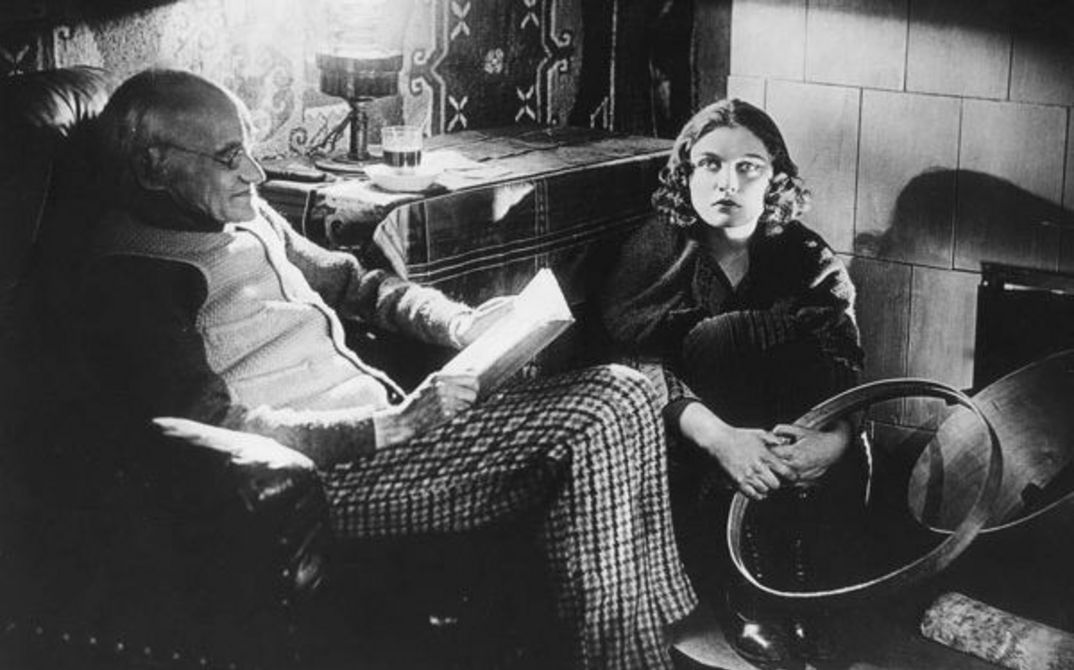DEVUSHKA S KOROBKOY (Moscow That Weeps and Laughs, Boris Barnet, USSR 1927, 1. & 3.2., on piano: Eunice Martins) Boris Barnet's combination of slapstick, romance, melancholy and ecstasy focuses on a young woman who lives in a Moscow suburb and works in a hat store in the center. To help a poor student in need of a place to live, she marries him. When a lottery ticket she was given instead of her wages turns out to be a winner, a whole series of turbulent events is set in motion. A charming film with plenty of body-based situation comedy that was inspired by US slapstick.
FREAKS (Tod Browning, USA 1932, 2. & 9.2.) Midgets, Siamese twins, living torsos –Browning’s horror melodrama centers on a group of physically impaired people who have the odds stacked against them, exhibited as fairground attractions and exploited and betrayed by their "normal" circus colleagues. Audiences of the time were scandalized at how frankly these “Freaks”physical infirmities, everyday lives, and longing for love and passion were portrayed; soon after the premiere, the film was censored for 30 years.
IN EINEM JAHR MIT 13 MONDEN (In a Year with 13 Moons, Rainer Werner Fassbinder, West Germany 1978, 4. & 9.2.) RWF's film is often regarded as one of his most personal melodramas, depicting a body as the scarred battlefield of life. The film tells the story of transsexual Elwira/Erwin, who has a sex change from man to woman following a dark childhood spent in a monastery and an equally unhappy adulthood spent working as a butcher in Casablanca. 19 scenes or rather 19 states of suffering form the last five days in the life of the protagonist, 19 fragments of unhappiness and misfortune, rejection and crisis all inscribed onto an increasingly damaged body.
BEAU TRAVAIL (Claire Denis, France 1999, 5. & 28.2.) Beautiful work –the title of this drama about a homeless legionary refers to the leitmotif of the recurring images of work the foreign legionaries carry out on their bodies, completing their physical training like an elegant drill –lonely alien bodies in the African desert landscape, trapped in their own lives.
BEING JOHN MALKOVICH (Spike Jonze, USA 1999, 7. & 22.2) Craig Schwartz (John Cusack) is a puppeteer and veritable master in moving his figures, bringing them to life and setting them in scene, as he regularly dreams himself out of his body and into these figures. At his new workplace, he is presented with the opportunity to quite literally take on a different role. Behind a filing cabinet, he finds a portal to the body and consciousness of John Malkovich, where he soon installs himself permanently. An exuberantly surreal black comedy about the desire to play with bodies and identities.
A WOMAN UNDER THE INFLUENCE (John Cassavetes, USA 1974, 8. & 20.2.) Gena Rowlands is the titular woman under the influence, channeling stabs of neuroticism, pent up aggression and suffocating maternal care in an acting tour de force of jarring physicality. She laughs and cries and trembles and screams, with a sense of burgeoning insanity determining each of her movements. Her nervous tempestuousness doesn't just rub off on her surroundings in the film but also on the audience too, which leaves the auditorium two and a half hours later as "spectators under the influence".
WEGE ZU KRAFT UND SCHÖNHEIT (Ways to Strength and Beauty, Nicholas Kaufmann, Wilhelm Prager, G 1925, 21. & 26.2., on piano: Eunice Martins) The UFA's film "about modern physical culture" shows people looking after their bodies, doing gymnastics, sport and dancing. In six episodes, an arc is drawn from Ancient Greece to the present when caring for one's body in the fresh air is thought to be the "way to strength and beauty". Inspired by the physical culture movement of the 1920s, the film propagates physical training in stylized documentary scenes. "In its ideological tendency the film stylizes physical exercise as a means of a retrograde renewal of humanity; to this extent it is also a symbol of the racial mythology of the National Socialists that had already taken hold in the 1920s." (Lexikon des Internationalen Films)
GOLD DIGGERS OF 1933 (Mervyn LeRoy, USA 1933, 23. & 26.2.) An army of dancers and a 90-strong orchestra was a minimum requirement for the choreographer Busby Berkeley, the 1930s revolutionary of the musical. Three showgirls, Polly (Ruby Keeler), Carol (Joan Blondell) and Trixie (Aline MacMahon), are at the heart of this musical, which was directed by Warner Bros old hand Mervyn LeRoy. They do everything to find a job in the midst of the Depression. Their savior comes in the form of the aspiring songwriter Brad. He offers to provide financial support for a new show but then his upper-class Boston family finds out and does everything to prevent him from having any contact with show business, especially showgirls.
RAGING BULL (USA 1980, 25. & 27.2.) Life is a battle and the body is an instrument for fighting: Jake LaMotta (Robert De Niro) stays doggedly true to this credo both inside and outside the ring, thus falling into a self-destructive tailspin that takes him from being an aggressive young boxer to becoming a has-been entertainer who loses his wife, brother and eventually his boxing matches too. Based on the autobiography of a middleweight boxer, Scorsese has his psychological portrait unfold in harsh black and white, with the protagonist's physicality being illuminated by De Niro in a dramatic acting tour de force. (mg)



